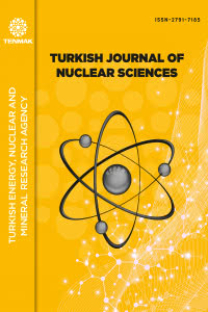NÜKLEER SANTRALLER İÇİN SAHA İÇİ ACİL DURUM PLANLAMA VE MÜDAHALE YAKLAŞIMI
Nükleer santrallerde reaktör kalbi ya da kullanılmış yakıt havuzunda yer alan yakıtlarda meydana gelebilecek bir ciddi hasar sonucu oluşabilecek nükleer santral kaynaklı acil durumlar saha içi ve saha dışında insanların ölümüne, ciddi sağlık etkilerine, psikolojik hasarlara ve ayrıca halkın yaşam kalitesini etkileyen ekonomik ve sosyolojik etkilere sebep olabilir. Tüm bu etkilerin sonuçları acil ve erken koruyucu eylemler ile diğer müdahale faaliyetlerinin hızlı bir şekilde uygulanması ile azaltılabilir ya da engellenebilir. Nükleer santral kaynaklı acil durumlarda saha içinde uygulanması gereken müdahalenin esaslarını belirleyen müdahale yaklaşımı saha içi acil durum planı kapsamında oluşturulmalıdır. Saha içi acil durum planında öncelikli olarak acil durum sırasında saha içinde oluşturulacak acil durum yönetim organizasyonuna ilişkin detaylar açıklanmalı ve saha içi acil durum müdahalesine ilişkin sorumluluklar belirlenmelidir. Bu çalışma kapsamında, Ulusal Radyasyon Acil Durum Planı başta olmak üzere ulusal mevzuat ve düzenleyici dokümanlar, Uluslararası Atom Enerjisi Ajansının konuya ilişkin yaklaşımı ve dokümanları, Amerika Birleşik Devletleri, Finlandiya, Rusya Federasyonu ve Japonya gibi örnek ülkelerin konu ile ilgili düzenleyici ve teknik dokümanları incelenmiştir. Saha içi acil durum planında yer alması gereken ana konu başlıkları açıklanırken yukarıda belirtilen ana hususlara ek olarak, acil durumun sınıflandırılması ve bu sınıflandırma yapılırken kullanılacak operasyonel kriterlerin tanımlanması; alarmlar, bildirimler ve haberleşmeye ilişkin düzenlemeler; tesiste, saha içinde ve sahaya yakın bölgelerde gerçekleştirilecek olan radyolojik izleme çalışmaları; acil durum müdahalesi sırasında kullanılacak merkez ve noktalar gibi konuların üzerinde durulacaktır.
Anahtar Kelimeler:
Nükleer santral, saha içi acil durum planı, acil durum yönetim organizasyonu, acil durum müdahale, acil durum eylem seviyeleri
ON-SITE EMERGENCY PLANNING AND RESPONSE APPROACH FOR NUCLEAR POWER PLANTS
An emergency at a nuclear power plant that involves damage to fuel in the reactor core or in a spent fuel pool can cause deaths, severe health effects and psychological effects, and can also have economic and sociological consequences affecting the public. These effects can be prevented or mitigated by the prompt implementation of protective actions and other response actions. The on-site emergency response strategy which identifies the basic principles of the emergency response actions should be constituted in the scope of the emergency plan. First of all, the details related to the on-site emergency management organization which will be formed during an emergency should be explained and the responsibilities related to the emergency response should be delegated in the emergency plan. In this study, Turkey’s National Radiation Emergency Plan, other national regulations, the documents and approach of the International Atomic Energy Agency about the topic and the regulations and technical documents of other reference countries such as USA, Finland, Russian Federation and Japan were examined. Emergency classification and the operational criteria to be used during this classification; arrangements for alarms, notification and communications; radiological monitoring to be implemented on-site and in the region close to the site; emergency centers and points to be used during emergency response are other topics which will be covered together with the main topics stated above during the explanation of the main topics that should be present in the on-site emergency plan.
Keywords:
Nuclear power plant, on-site emergency plan, emergency management organization, emergency response, emergency action levels,
___
- IAEA. (2003). Method for Developing Arrangements for Response to a Nuclear or Radiological Emergency (EPR-Method). Vienna: International Atomic Energy Agency.
- IAEA. (2006). Manual for First Responders to a Radiological Emergency, EPR-First Responders. Vienna: International Atomic Energy Agency.
- IAEA. (2007). Arrangements for Preparedness for a Nuclear or Radiological Emergency (GS-G-2.1) Vienna: International Atomic Energy Agency.
- IAEA. (2011). Criteria for Use in Preparedness and Response for a Nuclear or Radiological Emergency (GSG-2). Vienna: International Atomic Energy Agency.
- IAEA. (2015). Preparedness and Response for a Nuclear or Radiological Emergency (GSR Part 7). Vienna: International Atomic Energy Agency.
- Nordic Flag Book. (2014). Protective Measures in Early and Intermediate Phases of a Nuclear or Radiological Emergency, Nordic Guidelines and Recommendations. Helsinki.
- NRA. (2012). Nuclear Emergency Response Guideline. Tokyo: Japan Nuclear Regulation Authority.
- Russian Federation. (1998). Regulation on the Order of Emergency Annunciation, Operative Information Transfer and Arrangement of Urgent Assistance to Nuclear Power Plants in Case of Radiologically Hazardous Situations (NP-005-98). Moscow.
- Russian Federation. (2012). Standard Content of the Plan of Personnel Protection Measures in Case of Accident at Nuclear Power Plant (NP-015-12). Moscow.
- STUK. (2014). Emergency Arrangements of a Nuclear Power Plant (YVL C.5). Helsinki: Radiation and Nuclear Safety Authority of Finland.
- STUK. (2016). Radiation and Nuclear Safety Authority Regulation on the Emergency Arrangements of a Nuclear Power Plant (STUK Y/2/2016). Helsinki: Radiation and Nuclear Safety Authority of Finland.
- TAEK. (2015). Turkey's National Radiation Emergency Response Plan (URAP). Ankara.
- U.S. NRC. (1980). Criteria for Preparation and Evaluation of Radiological Emergency Response Plans and Preparedness in Support of Nuclear Power Plants (NUREG-0654 FEMA-REP-1 Rev.1). Washington D.C.: United States Nuclear Regulatory Commission.
- Başlangıç: 1981
- Yayıncı: -
Sayıdaki Diğer Makaleler
Yusuf GÜLAY, Hasan DİKMEN, Çiğdem YILDIZ, Recep BIYIK, Mehmet Timuçin AYBERS
Selen Nimet GÜRBÜZ GÜNER, Erhan AKSU, Haydar DİŞBUDAK, Mahmut EKEN, Ece ERGUN, Yücel Özer ÖZKÖK, Ömer GÜNDÜZ
Mihriban ŞAHİN, Abdullah DİRİCAN, Simay YÜKSEK
NÜKLEER SANTRALLER İÇİN SAHA İÇİ ACİL DURUM PLANLAMA VE MÜDAHALE YAKLAŞIMI
KATIŞKISIZ UO2 YAKIT PELETLERİNİN İLK AŞAMA SİNTERLEME KİNETİĞİNİN İNCELENMESİ
